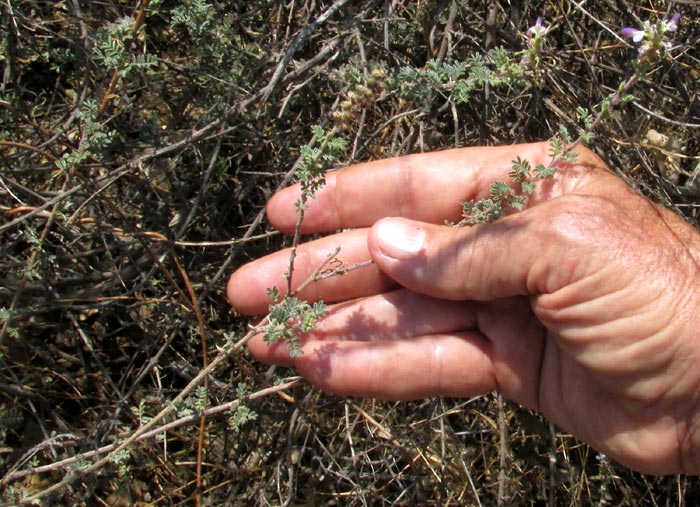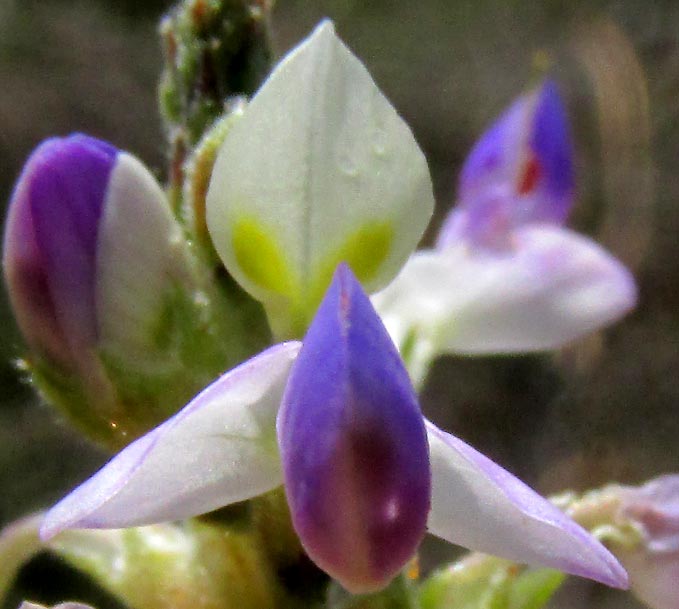Excerpts from Jim Conrad's
Naturalist Newsletter
entry dated May 1, 2022, issued from near Tequisquiapan, elevation about 1,900m (6200 ft), ~N20.57°, ~ W99.89°, Querétaro state, MÉXICO
PRAIRIE-CLOVER FLOWERING

A knee-high, much-branched shrub with thin but tough, woody stems often is seen in very thin soil frequently grazed by goats and sheep. One of its wiry branches is shown above. You can see that nowadays during the driest part of the late dry season, some of the bushes stems are tipped with roundish clusters of flowers. A close-up front view of one of the blossoms shows an unexpectedly dainty and graceful face:

The shape is classical "papilionaceous," the flower structure exhibited by many blossoms in the giant Bean Family, the word papilionaceous deriving from the French papillon, meaning "butterfly." Papilionaceous flowers bear a top petal called the banner or standard, two side petals called wings, and two lower petals fused together along their common margin forming a scoop-shaped keel, like the keel of a boat. This shrub's flowers when viewed from the side, however, suddenly look almost ungainly, as seen below:

The smaller, white banner with its yellow hovers above the rest of the flower, extended there by a slender stem. The side wings curve and droop. Clearly the flower's structure is a fine-tuned adaptation to fit just right with the species' pollinators, with no reference to human aesthetics.
The bush's pinnately compound leaves, like the new stems, are heavily invested with a whitish, grainy hairiness, and the stems display peculiar elongate bumps, as shown below:

All these features and more lead to DALEA DORYCNIOIDES, with no English name except "prairie-clover," a name generally applied to many of the approximately 200 species of the genus Dalea, of which about half are endemic to Mexico. Our Dalea dorycnioidees is a common, sometimes abundant, bush found in upland desert scrub and grazed land from arid northern Mexico south to Oaxaca.
In general, prairie-clover species are useful as soil stabilizers, green manure, livestock forage, as ornamental plants, for making brooms, and for various applications in traditional medicine.